Basics
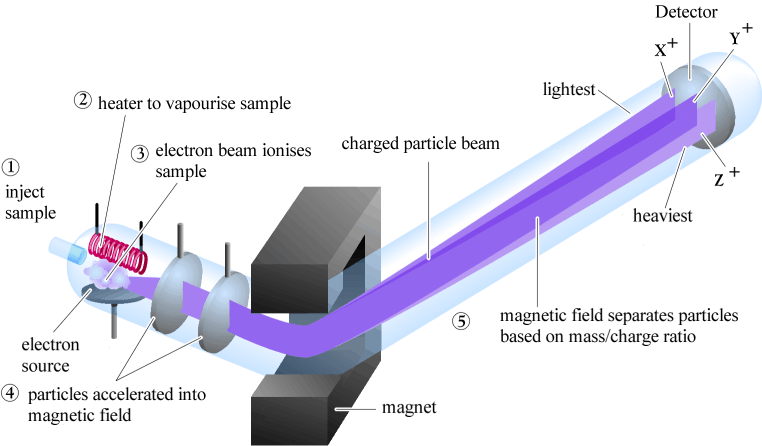
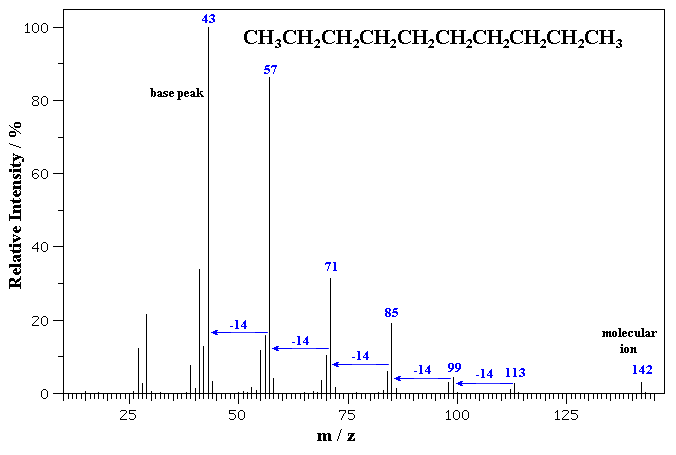
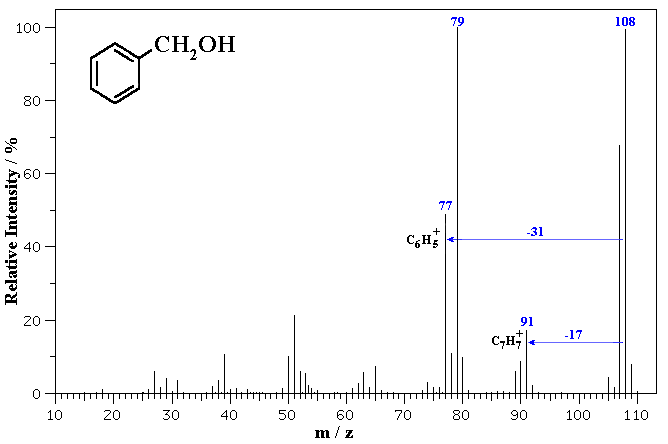
Isotope patterns
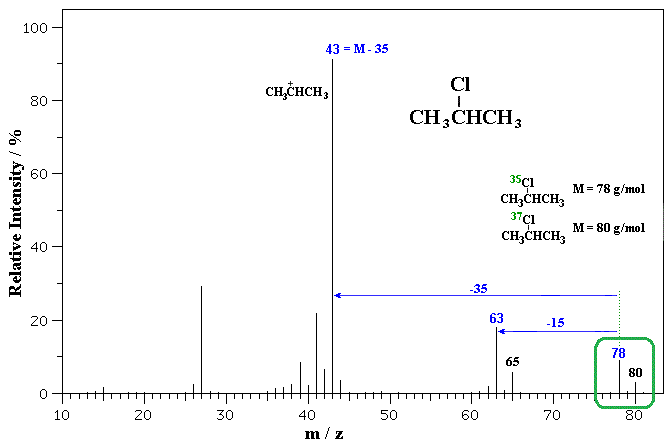
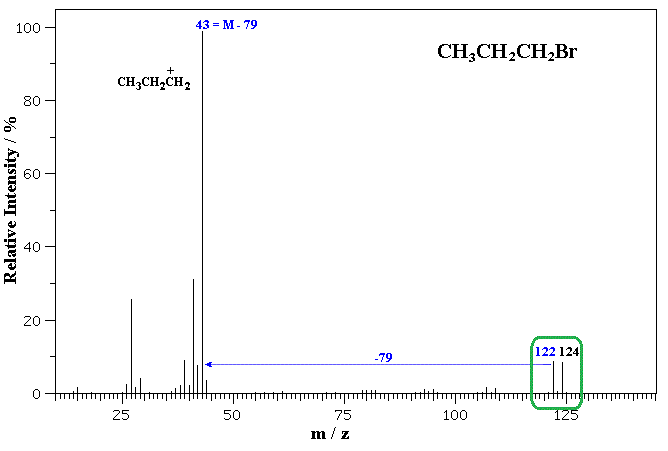
| Mass spectrometry is based on slightly different principles to the other
spectroscopic methods.
The physics behind mass spectrometry is that a charged particle passing
through a magnetic field is deflected along a circular path on a radius
that is proportional to the mass to charge ratio, m/e. In an electron impact mass spectrometer, a high energy beam of electrons is used to displace an electron from the organic molecule to form a radical cation known as the molecular ion. If the molecular ion is too unstable then it can fragment to give other smaller ions. The collection of ions is then focused into a beam and accelerated into the magnetic field and deflected along circular paths according to the masses of the ions. By adjusting the magnetic field, the ions can be focused on the detector and recorded. |
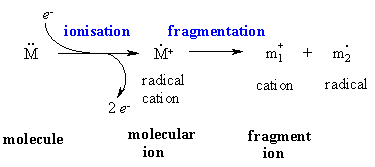 |

- Probably the most useful information you should be able to obtain from a MS spectrum is the molecular weight of the sample.
- This will often be the heaviest ion observed from the sample provided this ion is stable enough to be observed.
| Molecular ion | The ion obtained by the loss of an electron from the molecule |
| Base peak | The most intense peak in the MS, assigned 100% intensity |
| M+ | Symbol often given to the molecular ion |
| Radical cation | +ve charged species with an odd number of electrons |
| Fragment ions | Lighter cations formed by the decomposition of the molecular ion.
These often correspond to stable carbcations. |
The MS of a typical hydrocarbon, n-decane is shown
below. The molecular ion is seen as a small peak at m/z = 142.
Notice the series ions detected that correspond to fragments that differ by
14 mass units, formed by the cleave of bonds at successive -CH2-
units

The MS of benzyl alcohol is shown below. The molecular
ion is seen at m/z = 108. Fragmentation via loss of 17 (-OH) gives
a common fragment seen for alkyl benzenes at m/z = 91. Loss of 31 (-CH2OH)
from the molecular ion gives 77 corresponding to the phenyl cation. Note the
small peaks at 109 and 110 which correspond to the presence of small amounts
of 13C in the sample (which has about 1% natural abundance).

- Mass spectrometers are capable of separating and detecting individual ions even those that only differ by a single atomic mass unit.
- As a result molecules containing different isotopes can be distinguished.
- This is most apparent when atoms such as bromine or chlorine are present (79Br : 81Br, intensity 1:1 and 35Cl : 37Cl, intensity 3:1) where peaks at "M" and "M+2" are obtained.
- The intensity ratios in the isotope patterns are due to the natural abundance of the isotopes.
- "M+1" peaks are seen due the the presence of 13C in the sample.
The first MS is of 2-chloropropane. Note the isotope
pattern at 78 and 80 that represent the M amd M+2 in a 3:1 ratio.
Loss of 35Cl from 78 or 37Cl from 80 gives the base peak a m/z = 43, corresponding to the secondary propyl cation. Note that the peaks at m/z = 63 and 65 still contain Cl and therefore also show the 3:1 isotope pattern.
Loss of 35Cl from 78 or 37Cl from 80 gives the base peak a m/z = 43, corresponding to the secondary propyl cation. Note that the peaks at m/z = 63 and 65 still contain Cl and therefore also show the 3:1 isotope pattern.

The second MS is of 1-bromopropane. Note the isotope
pattern at 122 and 124 that represent the M amd M+2 in a 1:1 ratio. Loss of
79Br from 122 or 81Br from 124 gives the base peak a m/z
= 43, corresponding to the propyl cation. Note that other peaks, such as those
at m/z = 107 and 109 still contain Br and therefore also show the 1:1 isotope
pattern.

No comments:
Post a Comment